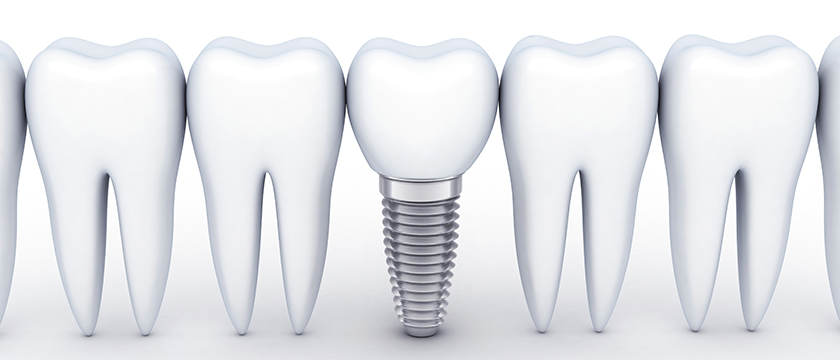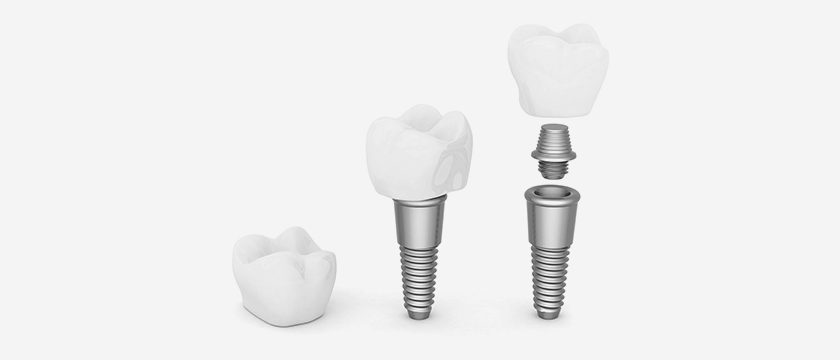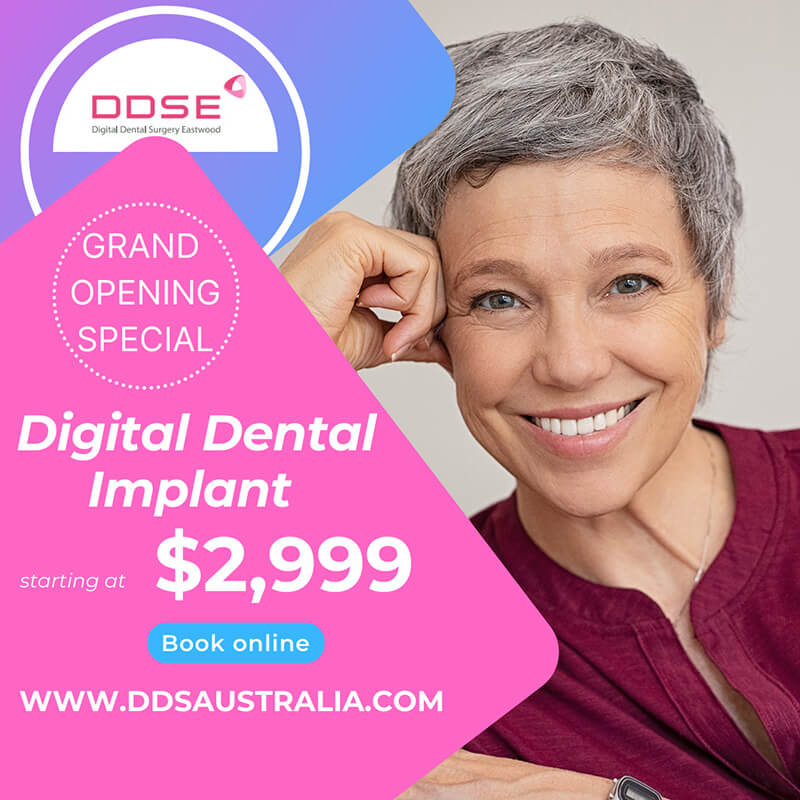So why the massive swing in prices? After all, a dental implant is a dental implant, right?
Well, not quite. You see, there is a huge number of variables that can affect dental implant costs and therefore, comparing implant prices without knowing what those variables are is a bit like comparing apples with oranges. With this in mind, we’re going to talk about the type of factors that can affect the cost of dental implants, so you have a clearer idea of what you’ll need to spend. So let’s crack on and explore the first of those.
Digital Dental Implants vs Conventional Implants
One of the biggest innovations to hit dentistry in recent years is digital dental implants. Typically, these will cost the patient around 50% more than conventional implants. Before we make comparisons between digital and conventional implants, it’s important to clear something up and it’s this… The term digital implant is a little misleading! What it doesn’t mean is that you’ll be fitted with digital teeth. Instead, the digital part refers to the state-of-the-art computer technology used to fit them. Here’s how it works… Using a combination of 3D scanning equipment and CAD/CAM technology, a 3D virtual mock-up is made of the jaw. While equipment such as intraoral scanners negate the need for messy and gag-inducing impression-taking using alginate, state-of-the-art virtual imagery has the ability to pinpoint succinctly all the components in the mouth including adjacent teeth positioning, nerves, and sinus cavities. As a result, implants can be digitally designed and fabricated to fit that exact space. In addition, using this same imagery, bespoke surgical guides can also be produced to aid the precise and exact positioning and trajectory of the dental implant as it’s placed. So what are the advantages of digital dental implants over their conventional counterparts? In essence, computer-guided dental implants are arguably better in every way when compared to traditional dental implants. Here are some examples:
Reducing risk
When traditional implants are fitted, the process relies heavily on the skills and experience of the dentist during the surgical phase to ensure that any restoration is implanted in the right position and at the right depth. While in the past, success rates have been proven to be high – somewhere between 90% and 95% being the norm – because much of the surgical process, if left to the ‘human factor’, implant malpositioning can and does still occur.
Alternatively, with digital dental implants, the focus is on the preparation carried out during the planning stages. For example, digital manipulations can be made in mock virtual surgery conditions to constantly ensure the best placement accuracy of the implant, before any surgery takes place. Then, when it comes to the actual placing of the implant, all the risk has been taken out of the equation as the surgical guide dictates exactly where the implant will go. This is down to the nearest fraction of a millimetre. Ultimately, this can reduce surgery time by as much as 50%, meaning less stress for the patient.
Greater efficiency
Conventionally, when dental implants are placed, the gum has to be opened to expose the bone, the implant is then secured into place, and the gum sewn up to cover the implant. Then a few months down the line, once bone fusion has taken place, the gum is opened up once again to expose the implant so that the abutment can be fitted.

Additional Treatments
Another dental implants cost consideration to bear in mind is whether or not you need additional treatment. Did you know for instance that as soon as a tooth is lost, the bone tissue that once supported that tooth starts to reabsorb back into the body? Okay, so why are we telling you this?
Because in order for any implant to thrive, it needs to be placed into adequate bone. This is irrespective of whether it’s placed using digital or conventional methods. Any implant therefore being placed into a space where a tooth has been missing for a period of time is likely to struggle because the patient is unlikely to have the sufficient bone density needed to promote osseointegration (this is when the bone fuses with the implant to create that super-strong platform).
As a result, the patient in question is likely to need a bone graft before the implant can be fitted. This involves another surgical procedure and as you’ve probably guessed – it’s going to affect the overall dental implant cost.
In addition to bone grafts, a patient may have to undergo other surgical procedures such as sinus lifting or in rarer cases, nerve repositioning. Alternatively, a patient may require non-surgical treatments such as gum disease treatment before implants can be placed. Again, this will affect the implant costs involved.
As a top tip, when looking at dental implant price comparisons, you may need to take this into consideration.
Dental Implants Price Comparison – Location
Believe it or not, the location in which your dentist is situated may also have a significant impact on the price of a dental implant restoration. For example, did you know that Sydney is not only the most expensive city in Australia but also the 11th most expensive city in the world? For this reason, dentists located in these areas will need to factor in overheads such as office rental, utilities, wages etc, which in turn needs to be factored into the pricing of dental implant treatment. This is why you see countries such as Mexico, Thailand, the Philippines, and Hungary where costs of living are a lot lower, offering dental implants for a fraction of the price than a dentist in say Geneva or New York or dare we say it, Sydney could offer.
Of course, you could suck up the cost of a flight and take a dental vacation along with the 10,000 other Australians seeking cheap dental implants, but the advantages and disadvantages of doing just that are way too long to list here. So instead, let’s just assume that where your local dentist is based, plays a contributing factor in the cost of dental implants.
Materials Cost
It’s fair to say that like anything you buy, you tend to pay more for quality. Quality generally means something that is constructed well and is built to last, and the exact same scenario applies to dental implants. Here at the Digital Implant Institute in Sydney for example, we use the DIO navi System utilising world leading DIO Implants. Similarly to other well-known brands such as:
- Straumann
- Nobel BioCare
- Zimmer Biomet and
- Bio-Horizons
DIO have invested millions of dollars into perfecting the perfect implant. They use the latest milling and surface engineering techniques to ensure the best possible bone fusion outcomes, and they use the latest, lightweight titanium implants designed to be comfortable, yet incredibly durable. When the technology used is state-of-the-art, patients can feel safe in the knowledge that they’re receiving the very best dental implant possible and one that’s not going to be rejected or fracture under the slightest pressure. After all, the idea behind a dental implant is that it’s a permanent replacement for missing teeth and as a result, the patient can rightly expect to live with it for many years. Agreed! Of course, on the flip side of this, you have new companies who want a slice of the action. However, more often than not, the only way they can compete in an ever-crowded implant manufacturing market is on price. As a result, they may manufacture their implants using cheaper grades of titanium, or even mix it with other alloys to keep costs low. In turn, some dentists will purchase implants from new companies to keep their overheads low so that they can offer bargain implants to their patients. For this reason, if you do see a cheap offer for dental implants, it’s worth finding out the type of implants that dentist uses. If they aren’t a well-known company, or one that’s been in the industry for a while, then you might want to avoid them for the reasons suggested above.
The Type of Implant
As a general rule of thumb, when the cost of dental implants appears too good to be true, it’s usually because it is! We’ve already talked about different qualities of dental implants and that not all implants are created equally, but another factor to take into consideration is the dental implant type. Standard implants for example act as a titanium base that’s both sufficient and strong enough to support a full crown. However, did you know that you can also get mini implants?
As the name implies, mini implants are smaller and are designed primarily to anchor lower dentures. They have a diameter less than 3mm and consist of one solid piece that screws directly into the bone. A retaining fixture can also be incorporated into the top of a denture to aid positioning. As such, the cost of mini dental implants is cheaper than the cost of standard implants so if the prices on a dental advert appear excessively cheap compared to other implants, make sure that you are comparing like for like.

Everything All In
Finally, when carrying out dental implant price comparisons you might want to ensure that the dental implant cost includes the whole package. You may or may not know that typically, a dental implant comes in three parts. These are:
- The titanium root
- The abutment and,
- The dental crown
Thankfully here are our Digital Dental Implants Institute in Sydney, we have our very own on-site dental lab where we digitally design and manufacture lifelike crowns. As a result, when we quote a price for dental implants it always includes the fitting of your permanent crown.
If you’re considering undergoing dental implant treatment then why not come and talk to the home of digital dentistry here in Sydney. Our highly experienced team only place the very best digital dental implants, so get in touch to book a no obligation consultation. To make an appointment, contact us on (02) 8294 8656 and let us help you restore your smile in a convenient, hassle-free and cost-effective way.







My dentures are no longer working for me. However, I’m still unsure about replacing them with dental implants mainly because of how much it would cost me. Judging from the price stated here it’s truly a significant investment.
It would definitely be worth it though if it’s really gonna hold up overtime.
I think it would be a good idea to discuss it carefully with my dentist first. I find this post useful, thanks.
Wow, I didn’t know that the cost of dental implants depends on many factors.
Now that I know that the pricing tends to vary from case to case, I think it’s best for me to find a dentist who accepts insurance, that way, the cost factor might not be a big hassle. Anyway, thanks a bunch for the great info!